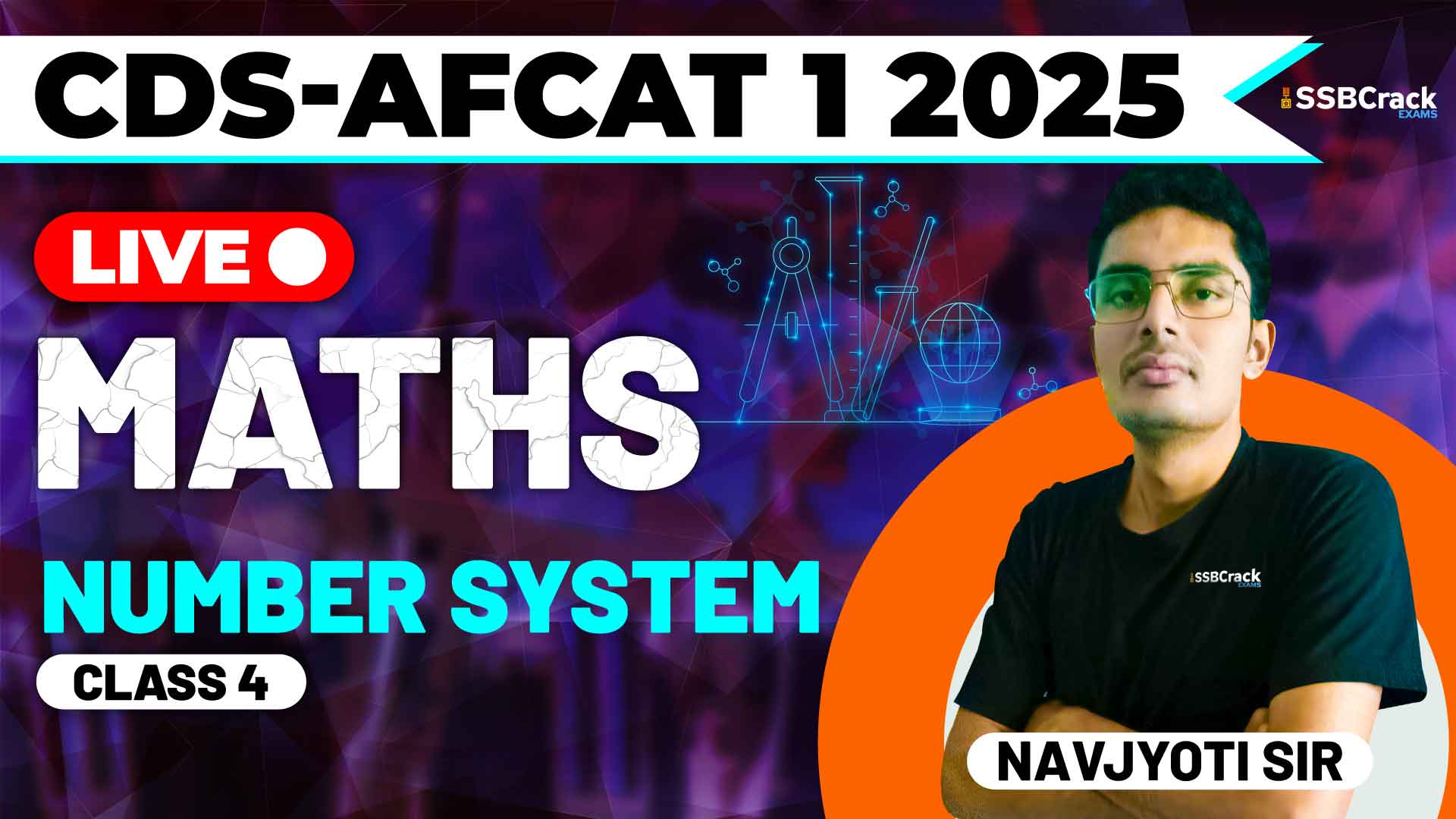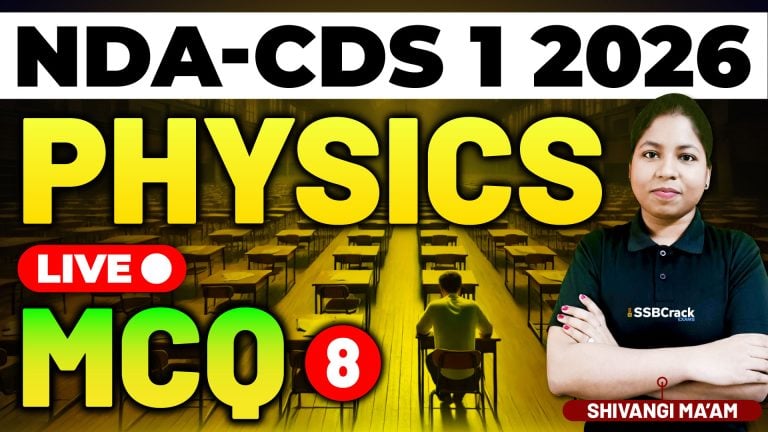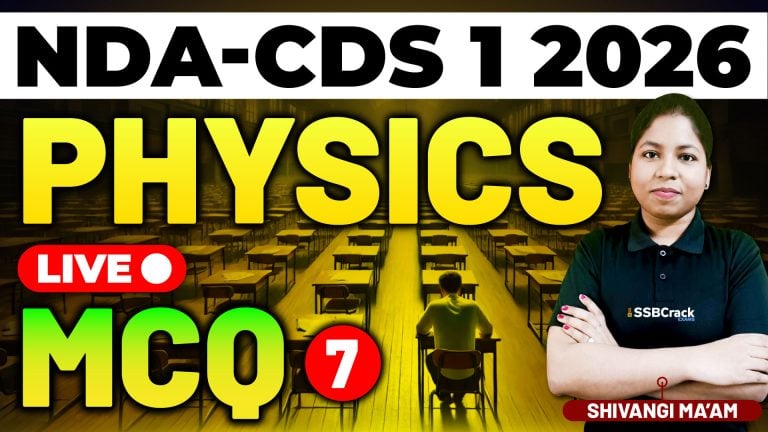A recent class on the topic of Number System for the Combined Defence Services (CDS) and Air Force Common Admission Test (AFCAT) Exams focused on several key sub-topics. The discussion centered on LCM and HCF, Surds and Indices, and how to convert repeating decimal numbers to fractions. These concepts form the foundation of many quantitative reasoning problems that are commonly asked in competitive exams like CDS and AFCAT.
In this blog, we will break down each of these topics and offer strategies for mastering them to help you excel in the exams. We will conclude with practical advice on how to integrate these concepts into your study plan.
Understanding LCM and HCF
The concepts of LCM (Least Common Multiple) and HCF (Highest Common Factor) are fundamental when working with numbers, especially in exams where problem-solving speed is key.
- LCM: The least common multiple of two or more numbers is the smallest number that is a multiple of each of the given numbers. LCM problems often appear in questions related to time cycles, periodic events, or situations requiring synchronization of two or more repeating actions.
- HCF: The highest common factor of two or more numbers is the largest number that divides each of the given numbers without leaving a remainder. HCF is often used in problems where you need to break something into smaller equal parts, such as in sharing resources or dividing quantities.
Strategies to Master LCM and HCF:
- Prime Factorization: Learn to quickly break down numbers into their prime factors. This is key to solving LCM and HCF problems as it allows you to efficiently find the common factors or multiples.
- Practice Word Problems: LCM and HCF are often embedded in word problems, so practice applying these concepts in real-world scenarios, such as finding how two people can meet again after walking at different speeds or determining the largest possible equal division of resources.
- Shortcut Techniques: Familiarize yourself with shortcut methods for LCM and HCF to save time during the exam. For instance, use the relationship between the product of LCM and HCF and the product of the two numbers.
Surds and Indices
Surds are irrational numbers that cannot be simplified into a whole number but can be expressed in root form, such as the square root of 2. Indices, or exponents, represent repeated multiplication of the same number, such as in (23) (which means (2 times 2 times 2)).
These concepts are important when dealing with radical expressions and exponential growth problems, both of which are common in competitive exams.
- Surds: Simplifying surds and performing arithmetic operations on them is a frequent requirement in CDS and AFCAT exams. You may be asked to simplify expressions or solve equations involving square roots and other radicals.
- Indices: Problems involving indices often require applying the rules of exponents, such as multiplying or dividing powers with the same base, or dealing with negative exponents. You might encounter questions asking you to simplify complex expressions involving powers or solve equations based on exponents.
Strategies to Master Surds and Indices:
- Memorize Basic Rules: Learn the rules of exponents and surds, such as the product, quotient, and power rules. These will help you solve problems quickly.
- Work on Simplification: Practice simplifying surds and expressions with indices regularly. Be comfortable handling numbers in root form and applying exponent rules.
- Recognize Patterns: In exams, many problems are designed around patterns in surds and indices. For instance, recognizing that multiplying a number by itself will remove the root can help you solve problems faster.
Converting Repeating Decimal Numbers to Fractions
Another key topic discussed in class was how to convert repeating decimal numbers into fractions. This concept is essential for solving problems involving decimals, as competitive exams often test your ability to quickly switch between decimal and fractional forms.
To convert a repeating decimal into a fraction, you need to use a simple algebraic trick. Repeating decimals are often written in the form of recurring numbers, like 0.333… or 1.2727…, and can be represented as fractions through basic algebraic manipulation.
Strategies to Master Converting Repeating Decimals to Fractions:
- Practice with Common Recurring Decimals: Some recurring decimals appear frequently in competitive exams. Familiarize yourself with the conversions for common decimals like 0.333… (which equals 1/3) and 0.666… (which equals 2/3).
- Algebraic Approach: Learn the steps for converting a repeating decimal to a fraction by setting the decimal equal to a variable and using algebra to isolate the variable. Practice this method with different repeating decimals so that you can perform it quickly during the exam.
- Estimate and Check: In exams, you might not need to fully convert a repeating decimal to a fraction; often, estimating the fraction or checking between two close answers will suffice. Practice estimation alongside precise calculation.
Preparing for the CDS and AFCAT Exams
Now that we’ve covered the key concepts of LCM, HCF, surds, indices, and repeating decimals, let’s discuss how to effectively prepare for these topics in the context of the CDS and AFCAT exams.
1. Conceptual Understanding First
Before jumping into practice questions, ensure you have a strong grasp of the basic concepts. Spend time reviewing the rules and principles behind LCM, HCF, surds, indices, and decimal-to-fraction conversion. Clear your doubts and solidify your understanding before tackling more complex problems.
2. Daily Practice
For topics like LCM, HCF, and surds, regular practice is key. Dedicate time each day to solving problems related to these concepts. This will help you build speed and accuracy. As you practice, try to understand the types of questions that commonly appear in CDS and AFCAT exams.
3. Time Management
Time management is crucial in competitive exams. Practice solving problems within a set time limit. For example, you can time yourself while solving 10 LCM and HCF questions or 5 problems involving surds and indices. This will help you build the speed necessary to complete the exam efficiently.
4. Work on Weak Areas
Identify which areas within the number system are challenging for you. Do you struggle more with surds and indices or with LCM and HCF? Once you identify your weak areas, spend extra time improving them through targeted practice.
5. Review Previous Year Papers
Solving past CDS and AFCAT exam papers will give you a clear idea of the kind of questions asked on these topics. Pay attention to how frequently certain subtopics appear, and prioritize your preparation accordingly.
Conclusion
The Number System plays an essential role in competitive exams like CDS and AFCAT. Whether you’re calculating LCM and HCF, simplifying surds and indices, or converting repeating decimals to fractions, mastering these concepts is critical for success. By focusing on regular practice, improving time management, and solidifying your conceptual understanding, you will be well-equipped to tackle these problems in the exam.
Incorporate these strategies into your study routine and continuously challenge yourself with new problems. With the right approach and consistent effort, you can improve your performance and score higher in the number system section of the CDS and AFCAT exams.

















